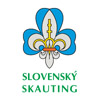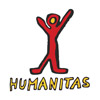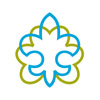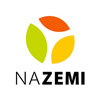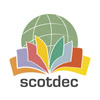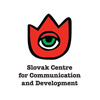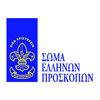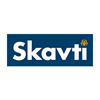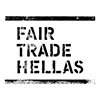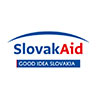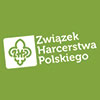

GREAT IDEA
1. WHY GIRA?
Lord Baden-Powell believed in the power of the Scout and Guides movement to affect change: within local communities and across the globe. He imagined a sustainable future for everyone, everywhere in order to leave this world a little better than we found it.
2. IS A GOOD DEED ALWAYS A GOOD THING?
Even the greatest change starts with a small spark of action. As Scouts and Guides, we believe in a duty to others – we aim to do good deeds and carry out community service. Our Scout and Guide values underpin everything we do and are particularly important when we think about why we do good deeds.
Integrity
We act with integrity; we are honest, trustworthy and loyal.
Respect
We have self-respect and respect for others.
Care
We support others and take care of the world in which we live.
Belief
We explore our faiths, beliefs and attitudes.
Cooperation
We make a positive difference; we cooperate with others and make friends.
But how often do we critically think if doing a good deed is actually a good thing? Are we actively thinking about the bigger, global picture or are we too focused on what “I” believe is best?
3. WHY GLOBAL?
Scouts and Guides can – and should – be part of the solution, not just the problem. And the perfect way to begin this is through Global Education.
In 2015, the Sustainable Development Goals (SDGs) were launched with the huge ambition of eradicating global poverty by 2030. The 17 SDGs emphasise how we are all connected and need to work together to achieve our aims. They call for “strengthened global solidarity… with the participation of all countries, all stakeholders and all people”.
In summary, they say: “By 2030, ensure that all learners acquire the knowledge and skills needed to promote sustainable development, including, among others, through education for sustainable development and sustainable lifestyles, human rights, gender equality, promotion of a culture of peace and non-violence, global citizenship and appreciation of cultural diversity and of culture’s contribution to sustainable development”. And that is what Global Education is all about.
Action which takes place locally has an impact globally. As Scout and Guide leaders, are we doing enough to empower young people to do good global deeds and carry out their GLOBAL community service?
The easiest place in Scout and Guide programme to introduce GIRA is through a) The good deeds concept or through community service tasks in older age section groups. It can also be introduced through mentioning one of the fundamental principles in Scouting and Guiding, duty to others. The next option is to b) spread messages or offer learning experiences at events where the wider public is invited (for example, summer camps, open-door days). The advanced option is c) to devote the whole part of the Scout and Guide year to GIRA.
4. WHAT GLOBAL INFORMED AND REFLECTIVE ACTION/GIRA MEANS?
Scouts and Guides should decide what positive change they want to contribute to and clarify the reasons why they want to do this. They should consider all unintended consequences in order to “be prepared” and to think more widely. The action should be participatory – not planned by a leader, but organized and implemented by the participants, based on their understanding of the issue they want to focus on. Ideas can come from one Scout or Guide, or the whole group can work together to deliberately think of what to do. Action can then be carried out by one, two or three individual Scouts or Guides or by the whole local unit. It is the responsibility of Scout or Guide leaders to motivate members and empower them to be the agents of change on different levels (individual, group, community).
The action should connect the local (place where we live) and the global (rest of the world):
- Through common global challenges: we are part of the problem and part of the solution;
- By using parallels: the same processes that are happening in our country are happening in other countries, we can learn from each other’s experiences and support each other;
- Through solidarity and empathy: we support and encourage someone in their decent life by our action.
What can we do to ensure our actions are informed? Actions should include three phases – preparation, process and reflection.
1. PREPARATION: Participants learn about the problem and its causes and consequences, then determine the change that they want to contribute to. In planning the appropriate action, participants consider possible consequences and procedures.
2. PROCESS: During the activity, keep an eye on the quality of work with information, clear messages and open communication with other participants.
3. REFLECTION: Provide space for reflection and discovering what the actions meant for the participants and assess what impact the action has caused.
5. WHAT ISN´T GIRA
Getting young people involved in raising money or awareness without consulting them about the issues, fully explaining why they are getting involved and issuing top-down instructions. The criterion of GIRA are not met when a) I do not consult children about the purpose of the action, b) I make top-down decision about what are we raising money for and c) give simple answers about the project I am seeking support for.
When thinking global we need to be cautious in order not to replicate stereotypes. For example, if we refer simplistically to Africa it may seem that the continent is homogenous. With our global actions we must avoid stereotypical portraying of Africa as one unit, or even one country, and Africans as “poor” people who need our help.
6. PROJECT PLANNING METHOD
Don’t panic! In general terms, a project is something that you intend to achieve by a given time. It involves setting a clearly defined goal. Working out what needs to be done – when and how – and then doing it. A project is not one activity but a combination of many different activities – each of which needs to be planned, organised and carried out in order to reach the common goal.
How It Works
These are three really simple mechanisms to make sure you can get the most out of your activities.
| Plan
Generate ideas for activities and formulate a plan. Do Carry out the activities according to the plan developed. Review Take time to evaluate all aspects of the activities. |
The project method consists of phases and is another way to ensure the quality of your programme.
Plan
Generate ideas for activities.
- Research the needs in your society or environment
- Decide what projects you are going to do
- Plan a wide variety of activities
- Keep our ‘thoughts’ and ‘ideas’ from above in mind when planning – don’t forget your motivation and target, check it from time to time to make sure you are still going in the right direction
- Choose dates and stick to them
- List all available resources
- Plan what equipment you’ll need and any preparations needed to get it ready
- Establish roles, jobs and deadlines
- Discuss possible alternatives, just in case
- Be aware that your plans may have to adapt closer to the date
- And last but not least check that your plan falls within the guidelines
Do
Everything’s in place, go for it!
- Make sure all equipment is ready to go
- Share the responsibilities between you in a group
- Ensure all members have an up-to-date programme
- Enjoy yourselves
Review
Take time to evaluate the activities in all its aspect, it will make it easier next time
- Give a space to everyone to think and write down what has he or she learned from the action
- Discuss good points and bad points
- See how activities could have been improved
- Take notes and keep track of them for next time
7. GIRA GUIDELINES
Think, act, reflect.
Now you know how to do the project with all its parts.
These guidelines can help you with successful preparation and implementation of activities in line with the Global Education approach.
Use the questions to help you critically assess your work plan. If your answers tend to be NO you might want to consider some changes.
Think, act, reflect!
- When presenting people (members of specific ethnic, religious, social, sexual community etc.) or places (countries, regions etc.), are you sure you don’t use negative and offensive stereotypes?
YES / NO
- Does your action explore the interdependency of the world – the connections between people from different parts of the world and how we all depend on each other and on natural resources offered to us by planet Earth?
YES / NO - Does your action encourage participants to become aware that we are all part of the problem and part of the solution? Will participants have an opportunity to think about possible solutions during the action?
YES / NO - Do you use and offer various sources of information about the topic you want to address, even those that might look unusual at a first glance?
YES / NO - Do you encourage participants to ask “behind the scenes” questions (why, who, in whose interest, what are the consequences for people and nature etc.)?
YES / NO - Does your action motivate the participants to get active themselves and inspire them to stay involved in the issue even after your action?
YES / NO - Are you sure all the materials (images, videos, texts etc.) that you intend to use for your action present people and places in a non-stereotypical way? Will you present a broader context of the used image or situation and indicate its source?
YES / NO - Have you thought about the long-term effect of the action and its bigger impact in the local or global environment?
YES / NO - Will all participants have an opportunity to speak freely about their feelings, thoughts and experiences after the action? Are you ready to accept criticism from participants of your action?
YES / NO - Do you have an evaluation plan and plan to take some time together with participants to think about possible improvement after the action?
YES / NO
8. EXAMPLE OF AN INFORMED ACTION
Here you can have a look under the hood of one Global Informed and Reflective Action which is connected to garment industry. It shows an interconnectedness between us and the manufacturers, and some alternative ways how to reduce our clothes consumption.
Name of action: Not out of fashion – Clothing Swap Party
Connected with Sustainable Development Goals (see end of this chapter):
- End poverty in all its forms everywhere (SDG 1)
- Ensure healthy lives and promote well-being for all at all ages (SDG 3)
- Promote sustained, inclusive and sustainable economic growth, full and productive employment and decent work for all (SDG 8)
- Ensure sustainable consumption and production patterns (Sustainable Development Goal 12)
Connected with Global Competences:
- Understanding global interdependence
- Sustainable way of living
- Standing up for social justice and equity
Goals – participants:
- learn about working conditions of dressmakers in Asia
- think about our consumerist approach to clothes (e.g. fast fashion)
- learn about alternative ways of clothes consumption such as secondhand, clothes markets, exchange clothes via internet, slow-fashion designers, ethical shopping options etc.
- exchange second hand clothes
- think about impacts of us as European consumers
- be aware of the interconnectedness between ourselves and a clothes producers in Asia.
Target group: members of group (troops, clans), their parents and family, friends and people passing by – locals, public
Duration of the event: 2-3 hours
Step A: Plan
- The troop collectively chooses an issue they want to address by GIRA with all of its conditions
- Think about what else is connected to the issue? (methods: brainstorming, tree of problems, mindmapping)
- Study all available resources and decide about the specific goals and focus of their action
- Prepare the concrete action plan (day, time, place, people, material, etc)
- Establish roles, jobs and deadlines
- Think about risks of the action – e.g. emphasis on substantiated and verified information, what may happen on the day.
Step B: Do
- Make sure all your equipment is ready to go
- Storage; clothes rails; clothes hangers
- Collecting clothes in advance.
- Invitation, flyers instructing everyone who wants to come can bring his clothes he or she doesn’t use anymore
- Ensure all members have an up-to-date programme (when to start, when to finish)
- Eight different areas with activities (for example):
- Clothes exchange area: storage; clothes rail; clothes hanger
- Information area: posters/flyers/fact sheets/information, material about prices of garments vs. wages of dressmakers, the most common problems of dressmakers in factories etc. (working conditions; living wage/minimum wage; use of chemicals; child labour; forced labour; cotton; supply chain; etc.). information from Clean Clothes Campaign (www.cleanclothes.org)
- Screening area: a documentary movie or documentary reports about a textile industry or similar theme
- Area for workshop/presentation/mode parade of slow-fashion design
- Up-cycling-area – sewing workshop – sew a new piece of clothes from already used material (reused it) or alter and originally modify their old or unworn piece of clothes
- Refreshment area: space for getting and sharing of new information about the topic, making a map of secondhand shops, shops and boutiques with sustainable fashion in our town or nearby, tips for websites of exchange clothes etc.
- Area for the option of taking action (e.g. subscribe a petition, plan a follow-up action, fill in a list for further informations about working condition in garment industries etc.)
- Feedback or reflection area: give an opportunity for feedback about the action – the wall poster with pencils…
- Clean up after the action all your materials
- Thank to all members who participated in the preparation
Step C: Review
- Have a chat with members of the organisation team
- What worked well?
- What did not work so well?
- What is the lesson learnt?
- How did we fulfill our goals?
- What changes could we make if we run the activity again in the future?
- Have a chat with members of the group
- How can we use our new information to do the things in a different way? – group/summer camp T-shirts, PR materials, trip to second-hand etc.?
You can find lot of resources in GE publication and another source of inspiration can be Sustainable Development Goals (SDGs) created by the United Nations as the world’s development trajectory till 2030. Find out more here.


